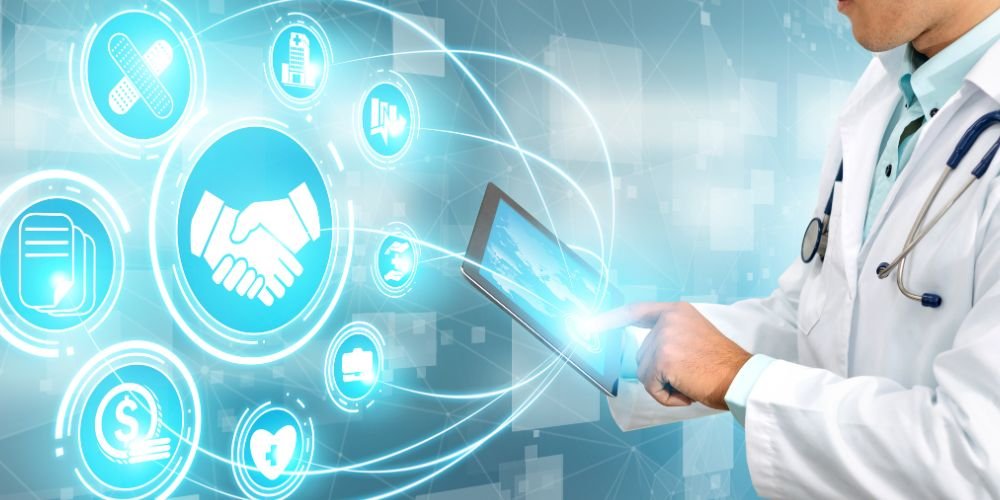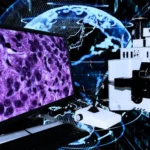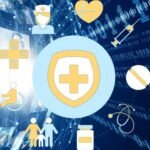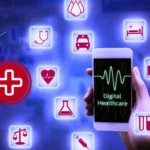Health data interoperability has emerged as a critical cornerstone in healthcare, revolutionizing how patient information is shared and accessed across the healthcare ecosystem. In an era where patient-centered care and data-driven decision-making are paramount, this comprehensive exploration delves into health data interoperability, uncovering its significance, applications across healthcare domains, and its transformative potential for creating a streamlined, patient-centric healthcare landscape.
The Significance of Health Data Interoperability
Health data interoperability signifies a groundbreaking shift in managing and utilizing healthcare data. These interconnected systems facilitate the seamless exchange of patient information, empowering healthcare providers with the tools and insights needed to deliver more effective and coordinated care. This shift toward interoperability carries profound implications, from improved patient outcomes to enhanced healthcare efficiency.
Patient-Centered Care
At the heart of health data interoperability lies the concept of patient-centered care. It enables healthcare providers to access a comprehensive view of a patient’s medical history, including diagnoses, medications, and treatment plans, regardless of where the data was initially recorded. This holistic view enhances the quality of care by ensuring that medical decisions are well-informed and tailored to the individual patient’s needs.
Coordinated Care and Care Continuity
Interoperable health data systems break down silos between different healthcare providers and settings. It facilitates care coordination and ensures that patients receive consistent and continuous care as they move between primary care physicians, specialists, hospitals, and other healthcare facilities. This seamless transition reduces the risk of medical errors and improves patient safety.
Data-Driven Insights
Health data interoperability empowers healthcare organizations to harness the power of data analytics and artificial intelligence. By aggregating and analyzing data from various sources, healthcare providers can identify trends, detect outbreaks, and develop predictive models for better disease management and public health interventions.
Techniques in Health Data Interoperability
The impressive capabilities of health data interoperability are made possible through various techniques and technologies that facilitate the exchange and integration of health information.
Health Information Exchange (HIE) Networks
Health Information Exchange networks act as the backbone of health data interoperability. These networks facilitate the secure and standardized exchange of patient data among healthcare organizations, ensuring that data is available where and when needed.
Health Level 7 (HL7) and Fast Healthcare Interoperability Resources (FHIR)
Standardized data formats and protocols, such as HL7 and FHIR, ensure that health data is exchanged consistently and competently. These standards enable seamless communication between healthcare IT systems, making data sharing more efficient.
Application Programming Interfaces (APIs)
APIs enable interoperability by allowing different healthcare applications and systems to communicate and share data. This technology is instrumental in connecting electronic health records (EHRs), wearable devices, and other healthcare tools.
Applications of Health Data Interoperability
Health data interoperability finds applications across numerous domains within the healthcare industry, catalyzing transformation in healthcare delivery, management, and the patient experience.
Electronic Health Records (EHRs)
Interoperability within EHRs ensures that patient records are accessible and transferrable across different healthcare providers. This streamlines administrative processes, reduces redundancy in tests and procedures and elevates the overall patient experience by minimizing data entry and transfer delays.
Telehealth and Remote Monitoring
Interoperability is a driving force behind telehealth and remote monitoring solutions. These technologies rely on the ability to access real-time patient data, enabling healthcare providers to conduct virtual visits, monitor patients remotely, and provide timely care. It is particularly vital for extending healthcare access to underserved or remote areas.
Public Health Surveillance
Health data interoperability is pivotal in public health surveillance and epidemiology. The timely sharing of data across regions and healthcare organizations facilitates the early detection of disease outbreaks, enabling a coordinated response to mitigate their spread. It also supports research into disease patterns and trends, contributing to evidence-based public health measures.
Research and Clinical Trials
Interoperability has far-reaching implications for medical research and clinical trials. Facilitating the integration of anonymized patient data from diverse sources accelerates the development of new treatments and therapies. Researchers can access a broader data pool for analysis, leading to more rapid advancements in medical science and improved patient outcomes.
Challenges and Ethical Considerations
While promising, adopting health data interoperability also introduces challenges and ethical considerations that demand meticulous consideration and mitigation strategies.
Data Privacy and Security
The sharing of sensitive health data raises the paramount concern of data privacy and security. Implementing robust measures to safeguard patient data from unauthorized access, breaches, and misuse is imperative, ensuring the highest trust and confidence in healthcare systems.
Standardization and Data Quality
Establishing consistent data standards and maintaining data quality is essential to achieving interoperability. Variability in data formats and quality issues can hinder the seamless exchange and utilization of health information.
Consent and Patient Control
Ethical considerations revolve around patient consent and control over their health data. Patients should retain autonomy over their data, deciding who can access it and for what purposes. Clear and transparent consent mechanisms must be in place to protect patients’ rights and privacy.
The Future of Health Data Interoperability
Health data interoperability is poised to play an even more significant role in shaping the future of healthcare, ushering in an era of patient-centric care, data-driven decision-making, and improved healthcare outcomes.
Precision Medicine
Interoperability will play a pivotal role in advancing precision medicine. It will enable the seamless integration of genomic data, patient histories, and clinical data, facilitating the development of tailored treatment plans and therapies that address individual patients’ unique genetic profiles and healthcare needs.
Artificial Intelligence and Predictive Analytics
The integration of artificial intelligence and predictive analytics will further enhance the capabilities of health data interoperability. These technologies will enable proactive healthcare interventions by predicting health issues, facilitating early disease detection, optimizing resource allocation, and improving the efficiency of healthcare delivery.
Global Health Collaboration
Interoperability will extend beyond national borders, fostering global health collaboration and data sharing. It will be particularly critical in responding to global health crises, sharing best practices, and addressing health disparities globally.
Conclusion
Health data interoperability is a technical achievement and a catalyst for a patient-centric, data-driven, and efficient healthcare ecosystem. Its significance lies in its capacity to connect healthcare systems, improve care coordination, and empower healthcare providers with data-driven insights. As health data interoperability evolves, ethical considerations, data privacy, and standardized practices must guide its development and implementation.
It envisions a future where healthcare is personalized, seamless, and patient-centered, ultimately leading to better health outcomes for individuals and communities. Health data interoperability is the bridge that unites the fragmented healthcare landscape, transforming it into a more cohesive and effective system.












